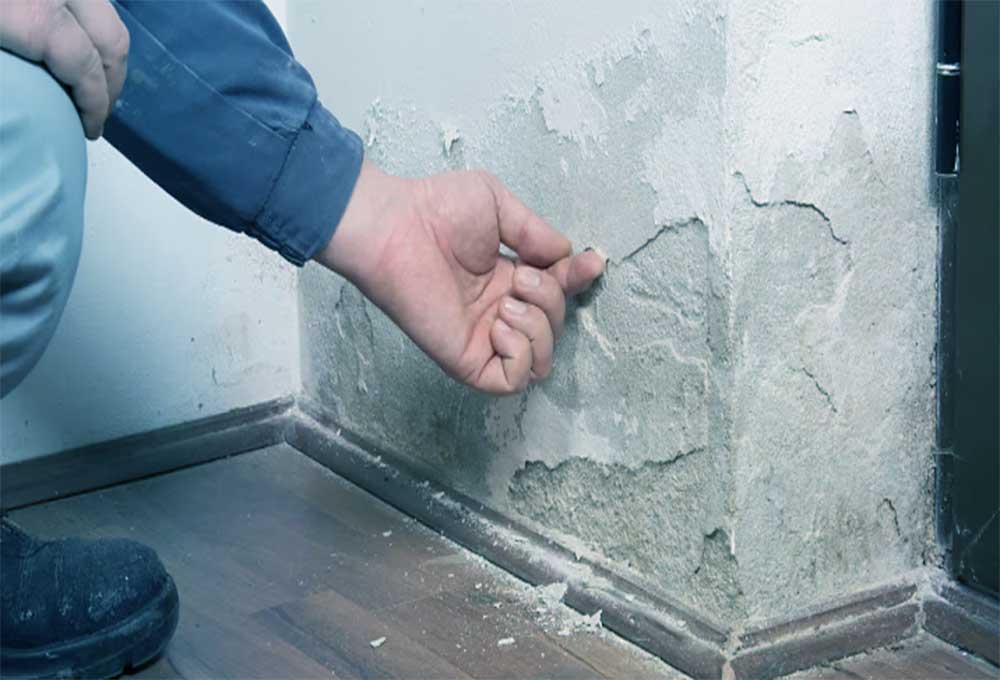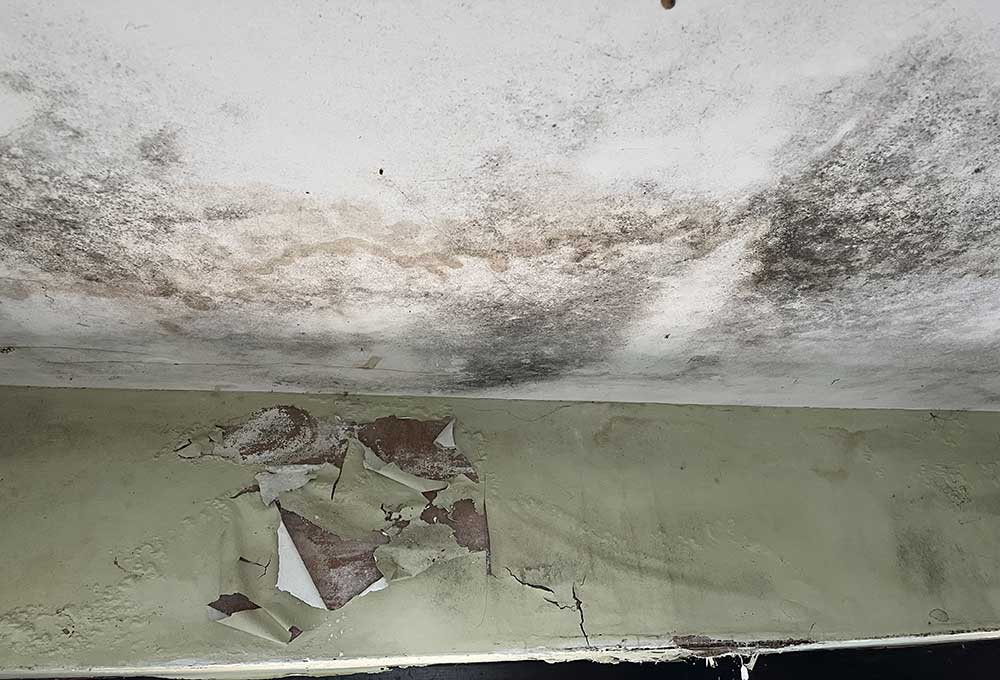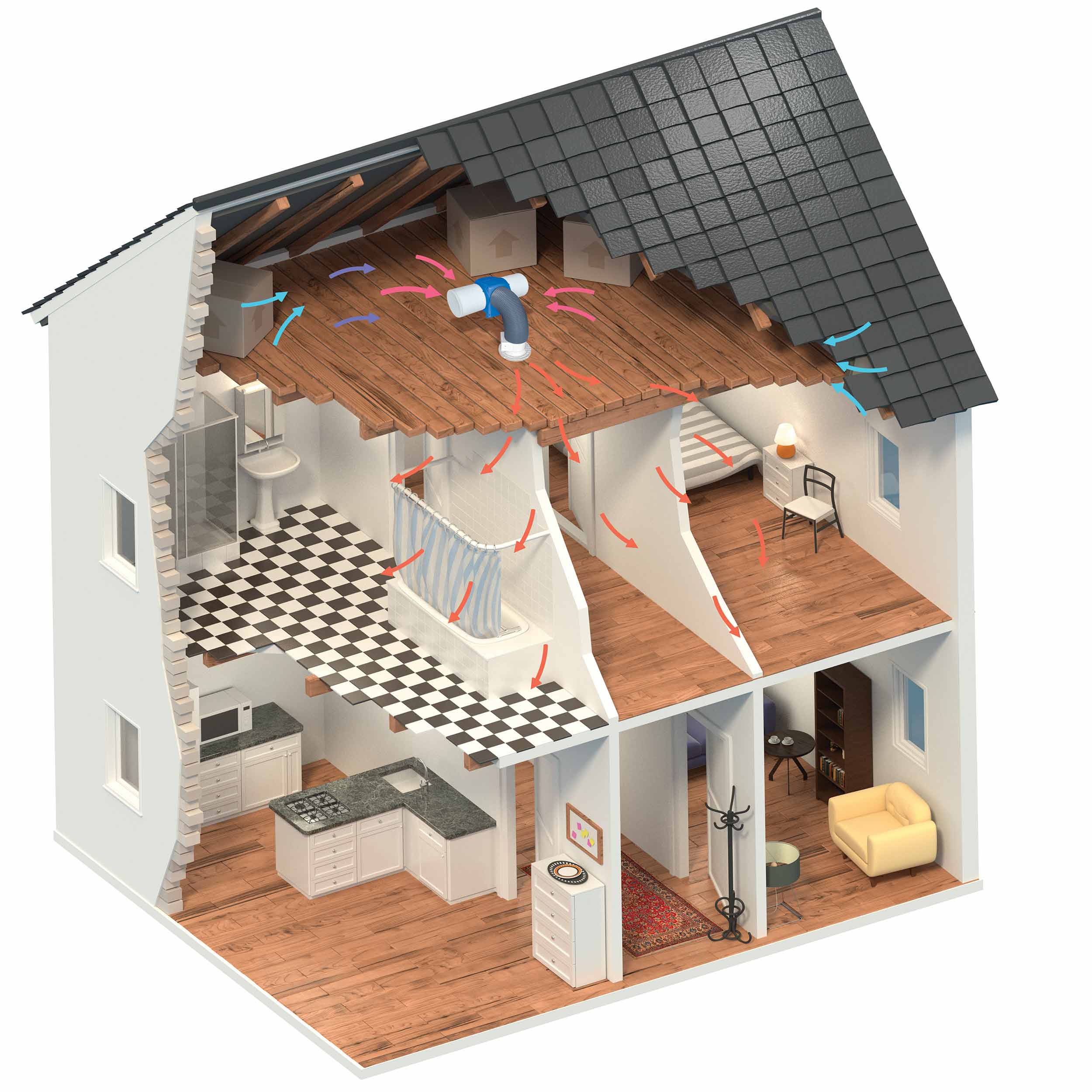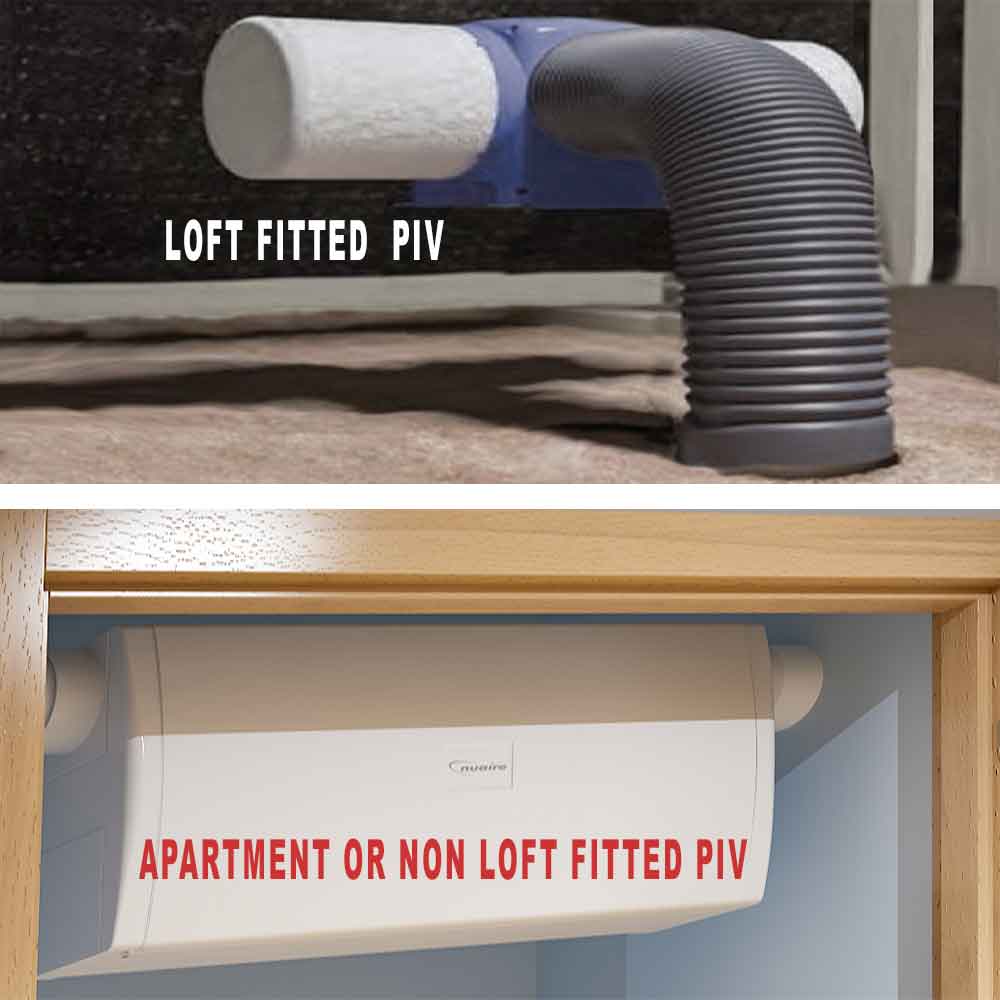Whenever mould is present within a home, damp is the cause. Mould requires heat and moisture to flourish, therefore identifying the reason as to why damp is present requires an in-depth site survey.
In other pages on our website, we have illustrated the dangers of living with mould and why it should be removed immediately, however if we do not tackle the reason why mould is present, mould can quickly return.
The 3 main types of damp found within a home are: Rising damp, penetrating damp, and condensation.

A damp course is a protective barrier to prevent water from the ground rising into the brickwork. In 1875 the first Damp Proof Course (DPC) was introduced and are used in differing formats in all new builds. The issue is
that whenever a DPC is installed, they normally come with a 10-year guarantee. This means that all properties that are older than 10 years, the DPC could be compromised. The remedy would be to inject a silicon-based chemical into pre-drilled holes which lines the pores of the masonry forming a new watertight barrier. We offer a 10-year guarantee which not only gives peace of mind, but on selling your property, this certificate forms part of the Property Information Form (TA6) which is essential to prospective buyers.

Penetrating damp is when moisture from an external wall seep through the masonry affecting the interior wall.
There are many different factors on how damp can penetrate your property. Blocked drainage pipework/guttering, defects within the roof or windows and exposure to the weather can also be a factor. One of the most common reasons is when a property has cast iron drainage pipes. The pipes are normally attached to the side of the wall and over time, the pipe can become rusty if not maintained with rust preventing paint.
We use many different products to rectify and seal the masonry dependant on how deeply the penetrating damp has caused and the method of the moisture intrusion.

This is by far the most common cause for damp with a property. Poor ventilation and extraction are the two key factors within a home. When warm moist air is in contact with cold spots ie windows, condensation occurs. This is more and more prevalent in new build properties as they are built with energy efficiency in mind.
Drying clothes on a radiator is another contributary factor, often
occurring in flats without gardens.

When the air pressure in a home, is lower than the air pressure outside, cold air will be pulled in and the stale air within the home will remain. Positive Input Ventilation (PIV) is a whole house or apartment air ventilation system that draws in fresh, filtered air from the loft in a house (as shown in the image) or from the outside in a flat. It is designed to introduce a positive pressure within the building, causing damp or humid air to be forced out through natural ventilation. To maintain a positive interior air pressure inside the home, the PIV should not be switched off; surprisingly the running cost is less than 2 pence per day.
To determine why your property is damp and offer recommendations on how to solve the issue, we offer an an in-depth site survey to evaluate the cause of damp. Please either call us on 0208 087 0977 or email us at info@ukmouldremoval.co.uk to arrange this service.

A PIV (Positive Input Ventilation) system is not an extractor. A PIV works exactly the opposite, and forces clean filtered air into the building, and so forces out damp humid air causing excess moisture in the dwelling through natural ventilation areas.
There are PIV’s available for properties with a loft space, and also properties with no loft space, often found in flats (please see image on the left). These units are designed to take fresh air from outside, filter it and discharge the clean air into the central hallway via an internal ducting system.
The dwelling's internal air discharge grille is usually installed at a high level in a central location within the hallway. These units are available with an integral heater which tempers the air brought in from outside the property, after it has been filtered. This is an automatic function based on a set point which is triggered by the outside temperature, and prevents unwanted cold air entering the building.
Whatever option is fitted, a PIV system will increase the quality of the air within the building, and significantly reduce the unwanted damp or humid air, that may be causing damp or condensation. It is however necessary to also consider sources of moisture within the building, such as steam from bathrooms with no ventilation or extraction, and tumble driers that may have no external vent.